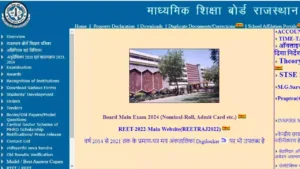Imagine falling ill with a serious medical condition, one that requires expensive hospitalization. The worry of mounting bills can be just as crippling as the illness itself. This was the reality for millions of Indians before the Pradhan Mantri Jan Arogya Yojana (PM-JAY), or Jan Arogya Abhiyan as it’s commonly called, came into existence. Launched in 2018, this ambitious scheme has become a game-changer in India’s healthcare sector, offering a financial safety net to low-income families.
Understanding Jan Arogya Abhiyan: A Shield Against Medical Expenses
Jan Arogya Abhiyan is the world’s largest government-funded health insurance scheme. It provides a cover of Rs. 5 lakh (around $6,200) per family per year for secondary and tertiary care hospitalization. This translates to cashless access to medical services at both public and empanelled private hospitals across India. The scheme targets over 10 crore (100 million) poor and vulnerable families, encompassing nearly 50 crore (500 million) beneficiaries.
Here’s how Jan Arogya Abhiyan works:
- Eligibility: Families identified through Socio-Economic Caste Census (SECC) data are automatically enrolled. Additionally, some states have included other categories like informal sector workers.
- Benefits: The scheme covers a wide range of medical expenses, including hospital stay, surgeon fees, medicines, and diagnostics. Pre-existing conditions are also covered, bringing much-needed relief to those battling chronic illnesses.
- Cashless Transactions: Beneficiaries can avail of medical treatment at empanelled hospitals without worrying about upfront payments. The hospitals then claim reimbursement from the government.
Impact of Jan Arogya Abhiyan: Empowering People, Transforming Healthcare
Jan Arogya Abhiyan has had a profound impact on India’s healthcare landscape. Here are some key aspects of its success:
- Financial Security: The scheme has empowered low-income families to seek timely medical care without the fear of financial burden. This has led to a significant increase in hospital admissions, especially for women and children, for critical procedures.
- Improved Healthcare Access: By including private hospitals, Jan Arogya Abhiyan has expanded the network of healthcare providers accessible to beneficiaries. This increased competition has also driven improvements in the quality of services offered.
- Reduced Out-of-Pocket Expenditure: The scheme has significantly reduced out-of-pocket expenses for families, freeing up resources for other essential needs. This has a positive ripple effect on overall household well-being.
However, Jan Arogya Abhiyan is still evolving. Some challenges include ensuring efficient claim processing, addressing concerns about treatment availability in remote areas, and raising awareness among beneficiaries about their entitlements.
The Road Ahead: Strengthening Jan Arogya Abhiyan for a Healthier India
Looking ahead, several initiatives can further strengthen Jan Arogya Abhiyan:
- Technology Integration: Expanding the use of digital tools can streamline claim processing, improve transparency, and facilitate easier access to information for beneficiaries.
- Community Outreach: Raising awareness through targeted campaigns and community engagement programs can ensure better utilization of the scheme, particularly in rural areas.
- Public-Private Partnerships: Stronger collaboration between public and private healthcare providers can increase the reach and quality of services offered under Jan Arogya Abhiyan.
Jan Arogya Abhiyan is a testament to India’s commitment to ensuring affordable healthcare for all. By addressing existing challenges and continuously innovating, the scheme has the potential to become a cornerstone of a robust and inclusive healthcare system in the country.
Beyond the Scheme: Fostering a Culture of Health Awareness
Jan Arogya Abhiyan is a crucial step towards a healthier India. However, it’s equally important to promote preventive healthcare practices alongside financial protection. Encouraging regular health checkups, healthy lifestyles, and disease prevention campaigns can significantly reduce the burden on healthcare systems in the long run.
By fostering a culture of health awareness alongside Jan Arogya Abhiyan, India can move towards a future where everyone has access to quality healthcare, not just in times of crisis, but to live a long and healthy life.














